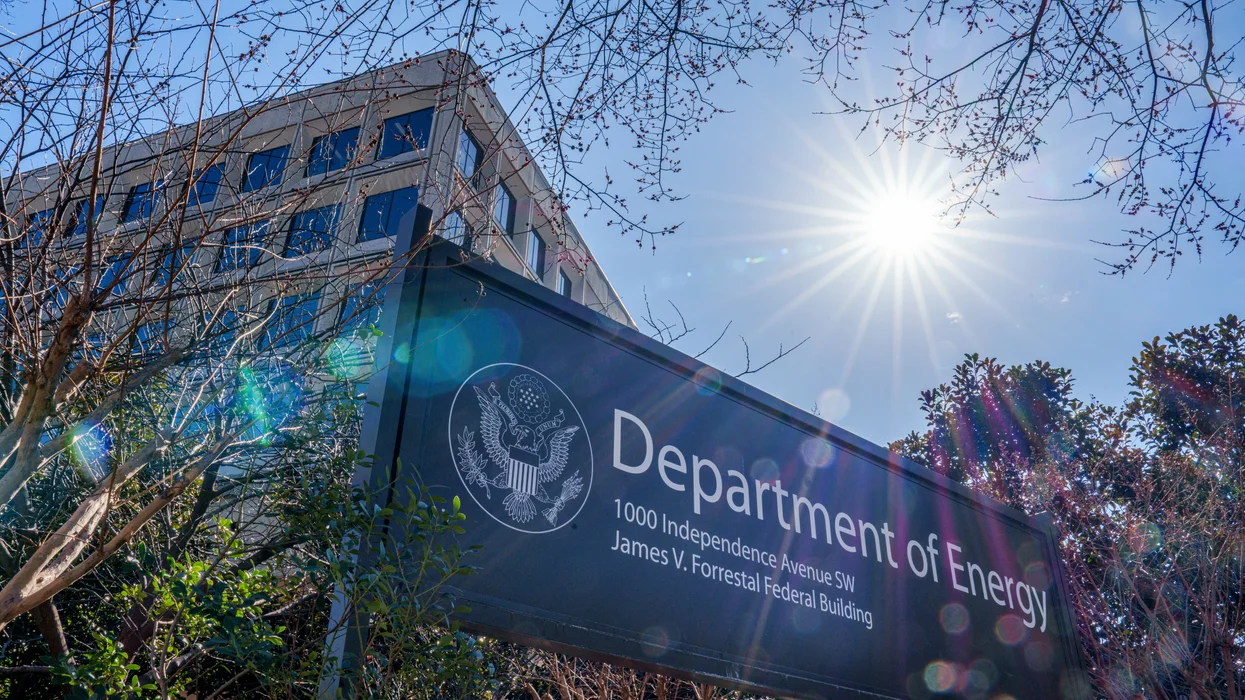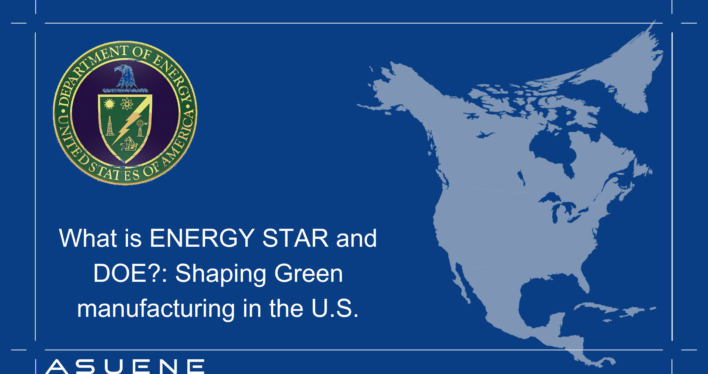- Article Summary
-
Introduction
As the manufacturing sector faces increasing pressure to reduce its environmental impact, energy efficiency has become a critical lever in achieving both cost savings and ESG (Environmental, Social, Governance) performance. In the United States, the combined force of the ENERGY STAR program and Department of Energy (DOE) minimum efficiency standards is transforming how factories operate—making manufacturing cleaner, leaner, and greener.
ENERGY STAR, administered by the U.S. Environmental Protection Agency (EPA), is one of the most recognized energy efficiency programs globally. When aligned with DOE’s regulatory standards, it forms a powerful framework for reducing industrial energy consumption, improving process efficiency, and boosting ESG credibility.
What Is ENERGY STAR for Industry?
ENERGY STAR for Industry is a specialized arm of the broader ENERGY STAR program, tailored specifically to manufacturers and industrial facilities. It provides:
- Energy benchmarking tools such as the ENERGY STAR Energy Performance Indicator (EPI)
- Recognition programs for high-performing plants
- Best practices guidelines for process optimization and energy management
- Integration with ISO 50001 and other global energy management systems
ENERGY STAR focuses not only on equipment but on holistic energy performance across entire facilities.
What is DOE Minimum Energy Efficiency Standards

The DOE sets mandatory minimum energy efficiency standards for over 60 categories of appliances and equipment, including:
- Motors and drives
- Boilers and HVAC systems
- Industrial refrigeration and compressors
- Lighting and water heaters
These standards evolve periodically to reflect technological advances. Non-compliance can result in financial penalties, import restrictions, and reputational damage.
For manufacturers, DOE standards act as both a compliance baseline and a technological roadmap.
The Business Case for Green Manufacturing
Energy-intensive sectors such as chemicals, cement, steel, and automotive face particularly high operating costs. Aligning with ENERGY STAR and DOE standards can unlock:
| Benefit | Description |
|---|---|
| Cost Savings | Reduced energy bills from more efficient equipment and systems |
| Brand Value | Public recognition and trust from ENERGY STAR certification |
| Regulatory Compliance | Assurance of alignment with federal mandates |
| ESG Integration | Tangible Scope 1 and 2 emission reductions for ESG reporting |
| Access to Incentives | Eligibility for federal and state-level rebates, tax deductions |

Growth of ENERGY STAR Certified Manufacturing Facilities
Over the last decade, there has been a marked increase in the number of manufacturing facilities earning ENERGY STAR certification, reflecting rising corporate commitment to energy stewardship.
Figure 1. Steady growth of ENERGY STAR certified manufacturing plants from 2010 to 2024.
From just 40 certified facilities in 2010, the number has grown to over 340 as of 2024. This trend is expected to continue as more companies integrate energy performance into core ESG strategy.
Case Studies
3M Corporation
3M has embraced ENERGY STAR since the early 2000s. Its facilities undergo annual energy performance benchmarking, and several plants have been ENERGY STAR certified for over 10 consecutive years. The company integrates ENERGY STAR data into its GRI and CDP disclosures, reinforcing its ESG profile.
Toyota Motor Manufacturing
Toyota’s Kentucky plant was one of the first auto assembly plants to receive ENERGY STAR certification. It achieved a 35% reduction in energy use per vehicle by deploying real-time energy analytics, efficient lighting systems, and heat recovery mechanisms.
Steelcase Inc.
The office furniture manufacturer invested in high-efficiency boilers, lighting retrofits, and compressed air system optimization. Its Michigan plant reduced energy intensity by 20% over five years, qualifying for ENERGY STAR recognition.
ENERGY STAR Tools and Resources for Industry

ENERGY STAR offers a suite of tools that manufacturers can use to assess and improve their energy efficiency:
| Tool | Purpose |
|---|---|
| Energy Performance Indicators (EPIs) | Sector-specific benchmarking (e.g., cement, auto, food processing) |
| Portfolio Manager | Tracks energy and water consumption across facilities |
| Guidelines for Energy Management | Step-by-step energy improvement framework aligned with ISO 50001 |
| Plant Energy Performance Indicators | Quantifies operational efficiency versus national peers |
These tools are critical in converting raw energy data into actionable insights, guiding strategic ESG reporting and decarbonization initiatives.
Regulatory Synergy- ENERGY STAR and DOE
The ENERGY STAR program and DOE standards are not siloed—they work in tandem:
- ENERGY STAR sets the aspirational benchmark: Top 25% performers qualify for certification.
- DOE enforces the minimum floor: No product or facility may legally operate below these thresholds.
Manufacturers that align with ENERGY STAR automatically exceed DOE minimums, positioning themselves as industry leaders in energy responsibility.
ESG Reporting and Market Signals
Adhering to ENERGY STAR and DOE standards significantly strengthens a company’s ESG narrative:
- CDP Climate Change: Facility-level energy use and emission reductions.
- SASB Standards: Metrics for energy intensity, water use, and emissions per unit output.
- GRI 302 & 305: Direct and indirect energy consumption and associated GHGs.
Moreover, third-party ESG rating agencies like MSCI, Sustainalytics, and ISS increasingly reward manufacturers who demonstrate third-party validation of environmental practices—such as ENERGY STAR certification.
Overcoming Barriers to Adoption
| Challenge | Solution |
|---|---|
| Lack of internal expertise | Partner with certified energy consultants |
| Capital cost concerns | Use ENERGY STAR Lifecycle Cost Calculator to demonstrate ROI |
| Complex energy data | Deploy sub-metering and IoT-based monitoring systems |
| Cultural resistance | Link energy KPIs to performance bonuses |
ENERGY STAR participation is voluntary, but its strategic benefits far outweigh the effort of compliance—especially in a competitive ESG-driven economy.
The Road Ahead
With the Inflation Reduction Act of 2022 and potential updates to DOE standards in 2025, we expect:
- Greater funding for industrial decarbonization
- Enhanced visibility of ENERGY STAR in federal procurement
- Integration of ENERGY STAR metrics into federal climate disclosure regulations
- New ENERGY STAR categories for emerging technologies like hydrogen fuel cells and AI-optimized energy systems
ENERGY STAR’s influence will continue expanding—offering manufacturers both a moral compass and a market differentiator.
Conclusion
The combined power of the ENERGY STAR program and DOE minimum efficiency standards is not just regulatory—it is transformational. Forward-thinking manufacturers can leverage these programs to:
- Cut operating costs
- Reduce emissions
- Enhance ESG ratings
- Strengthen stakeholder confidence
In a global market increasingly driven by transparency, accountability, and sustainability, ENERGY STAR is more than a label—it is a leadership standard for green manufacturing.
Download Our Expert Publications!

Why Work with ASUENE Inc.?

ASUENE USA Inc., a subsidiary of Asuene Inc., is a key player in carbon accounting, offering a comprehensive platform that measures, reduces, and reports emissions, including Scope 1-3, with expertise in decarbonization. Asuene serves over 10,000 clients worldwide, providing an all-in-one solution that integrates GHG accounting, ESG supply chain management, a Carbon Credit exchange platform, and third-party verification.
ASUENE supports companies in achieving net-zero goals through advanced technology, consulting services, and an extensive network.
